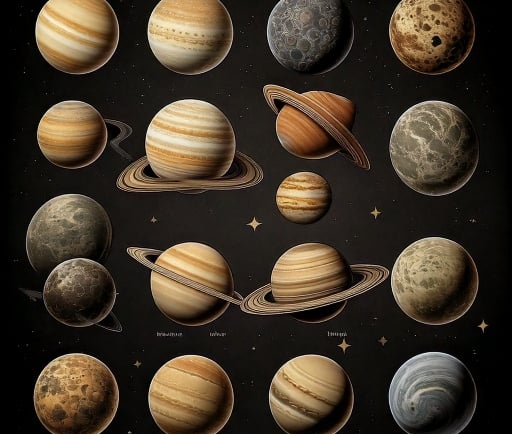Saturn's Moon Count


Introduction to Saturn's Unique Satellite System
Saturn, the sixth planet from the Sun, is renowned for its stunning rings and vibrant atmosphere. However, what often captivates astronomers and space enthusiasts alike, is Saturn's impressive collection of moons. With a staggering 274 confirmed moons, Saturn holds the record for the most natural satellites orbiting a planet in our solar system. Recent discoveries continue to shed light on this captivating satellite system—most notably in March 2025, when astronomers confirmed the presence of 128 additional moons, significantly elevating the total moon count.
Diverse Range of Moons: Size and Characteristics
The moons of Saturn exhibit a remarkable diversity, both in size and environmental conditions. Notably, Titan, Saturn's largest moon, surpasses even Mercury in size, making it one of the most intriguing bodies in our solar system. Titan is shrouded in a thick atmosphere and even possesses lakes of liquid methane, distinguishing it as a prime target for astrobiological studies.
On the other end of the size spectrum is Enceladus, a smaller moon known for its fascinating geological activity. Interestingly, Enceladus harbors a global ocean beneath its icy crust. This unique feature has made it a primary focus for astrobiology research, as the subsurface ocean may provide the necessary conditions for life, taking exploration efforts beyond our home planet.
The Importance of Saturn's Moons in Space Exploration
The significance of Saturn's moons reaches far beyond their sheer number. Their diverse atmospheres and surface conditions hold keys to understanding planetary formation and the potential for extraterrestrial life. The discoveries made through missions like the Cassini-Huygens, have provided invaluable data about Titan and Enceladus, increasing our understanding of not only these moons but also the mechanisms of the solar system.
As we continue to explore Saturn's moons, the implications of each discovery are immense. For instance, the ongoing study of the subsurface ocean on Enceladus might open up new avenues for astrobiology, urging future missions to investigate these distant worlds further. Likewise, Titan’s complex carbon-based chemistry could offer insights into prebiotic conditions that may resemble early Earth.
In conclusion, Saturn's moons, with their vast variety and intriguing characteristics, present an endless horizon for scientific inquiry. As we look towards future exploration and the potential for further discoveries, the quest to comprehend the mysteries of these remarkable satellites proves ever more enticing. With 274 moons and counting, Saturn stands not just as a beautiful celestial body, but as a vital component in our quest to understand the cosmos.
